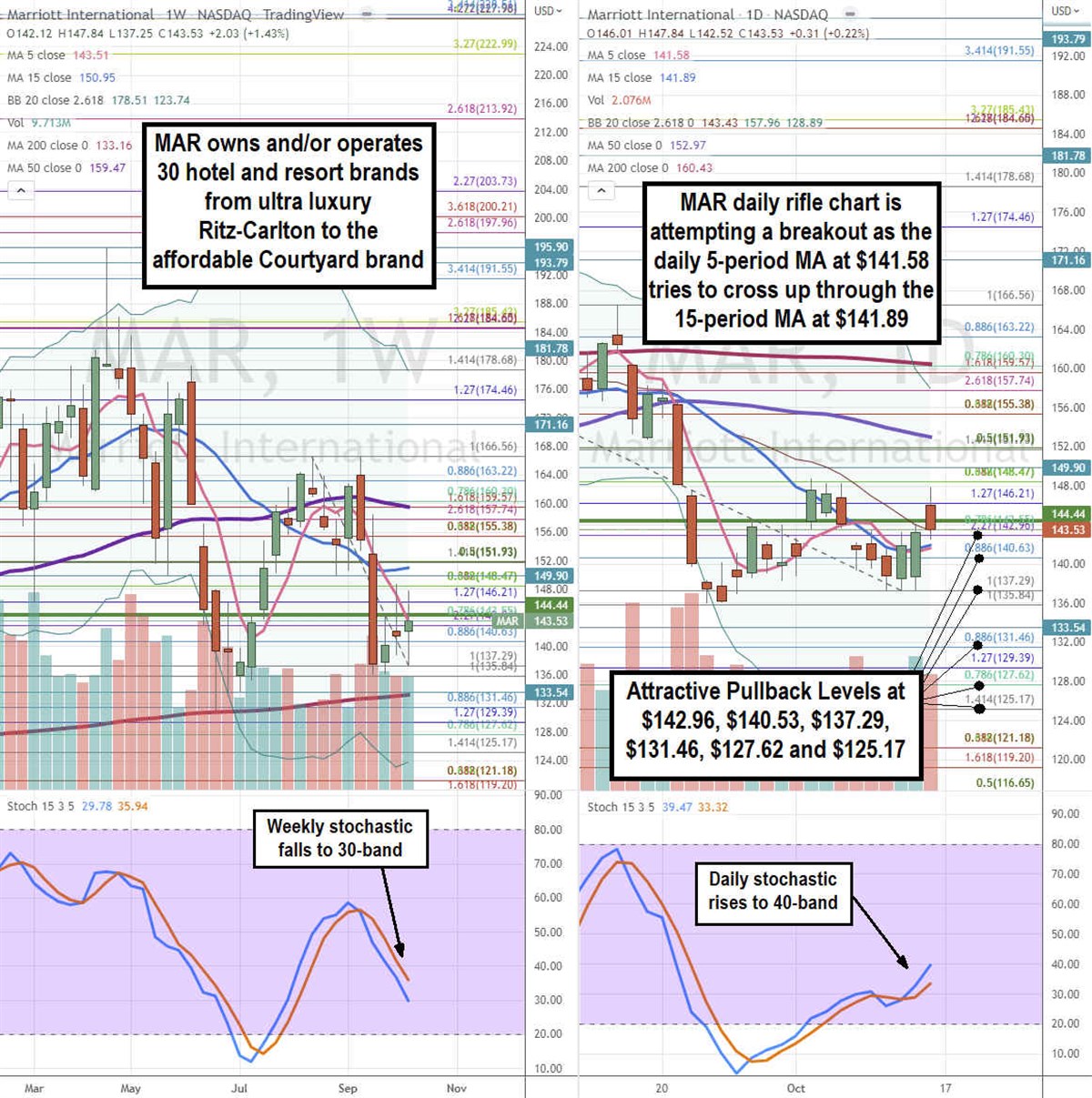Should you make a reservation in Marriott International Stock?
Global hotel operator Marriott International’s (NYSE: MAR) business has been on a rollercoaster ride since the pandemic, but business recovered better than pre-pandemic levels in 2019. The company owns and operates 30 brands, including luxury names such as The Ritz-Carlton, St. Regis and Bvlgari hotel and resorts, W hotels, Westin and Sheraton hotels, as well as low-cost Fairfield Inn and Courtyard brands. Marriott competes with Hilton Worldwide (NYSE: HLT), Wyndham Hotels and Resorts (NYSE: WH) and Choice Hotels International (NYSE: CHH) for business travelers, which is the most profitable segment. The resumption of air travel and the lifting of COVID-related restrictions in most destinations, with the exception of China, has been a key factor for the hotel industry. Business travelers accounted for 60% and leisure travelers 40% of revenues. A continued recovery in its business traveler segment may provide a tailwind as there is more trail as business travel is still below 2019 levels. Its Bonvoy loyalty program topped 169 million of members. A global recession remains the main threat to its operations, just as it has recovered from the damage caused by the pandemic. However, growth has not slowed, as evidenced by revenue growth of 69.5% in its second quarter 2022 earnings report. The company added 9,200 rooms and converted 4,400 rooms to the international in the second quarter to bring the total to more than 8,100 properties and more than 1.5 million total rooms.
MarketBeat.com – MarketBeat
Grow in all directions
On August 2, 2022, Marriott released its fiscal second quarter 2022 results for the quarter ending June 2022. The company reported earnings of $1.80 per share, beating analyst consensus estimates of $1.57 per share. share of $0.23. Revenue rose 69.5% year-over-year (YoY) to $5.34 billion, beating analyst consensus estimates of $4.96 billion. System-wide constant dollar comparable revenue per average room (RevPAR) increased 70.6% globally, 66.1% in North America and 87.8% internationally. The company added 17,000 rooms globally, including 9,200 rooms in international markets and nearly 4,400 conversion rooms. Marriott’s global development pipeline totals nearly 2,950 properties with more than 495,000 rooms including 27,400 rooms approved but not yet signed. Nearly 203,000 rooms were under contract at the end of the second quarter. Co-branded credit card fees rose 40%, driven by both new cardholders and record levels of cardholder spending. Franchise royalties reached $938 million, compared to $587 million in the same period last year. The company ended the quarter with total debt of $10.1 billion and total cash and cash equivalents of $1.4 billion. Marriott repurchased 1.9 million shares during the quarter at an average price of $157.38 per share. Total buybacks in 2022 were 2.9 million shares for $448 million with an average price of $152.99.
CEO Comments
Marriott CEO Anthony Capuano commented, “Marriott’s second quarter results highlight consumers’ love of travel. We delivered exceptional results as the global accommodation recovery continues. Global RevPAR1 surpassed 2019 levels in June. The average daily rate for the second quarter was robust, at 7% above 2019 levels, and the global occupancy rate reached 68%. He added that the company had signed 23,000 chambers worldwide, nearly 30% of which were conversion chambers from competing brands. It hopes to return $2.2 billion to shareholders in 2022 through share buybacks and dividends.
The future always looks bright
Marriott issued an upward forecast for Q3 2022 EPS of $1.59 to $1.69 from analyst consensus estimates of $1.59. The company raised its full-year 2022 EPS forecast to $6.33 to $6.59 from analyst consensus estimates of $5.99. The question is when will normalization begin for Marriott, as it is still in the rebound and reopening phase, or is this the new normal?

What the charts say
Using rifle charts on the weekly and daily charts can provide a short-term perspective of the playing field for MAR stocks. The weekly breakdown of the Rifles chart is led by the declining weekly 5-period moving average (MA) straddling $143.55 Fibonacci level (fib) crossing the weekly flat 15-period MA at $150.98 and testing the weekly weak market structure (MSL) buy trigger at $144.44. The weekly 50-period MA sits near the $159.55 fib and the 200-period MA sits at $133.54. The weekly stochastic fell into the 30 band. The lower weekly Bollinger Bands (BB) lie at $123.74. The daily Rifle chart is the opposite as it attempts a breakout with the flat 5-period MA trying to wrap around at $141.58 to cross the 15-period MA at $141.89. This is fueled by the daily stochastic upside crossing the 40 band. The daily 50-period MA resistance lies at $152.97 and the daily 200-period MA resistance straddles the $160.30 fib. Attractive pullback levels are found at the level of $142.96, $140.53, $137.29, $131.46, $127.62 and $125.17.


Comments are closed.